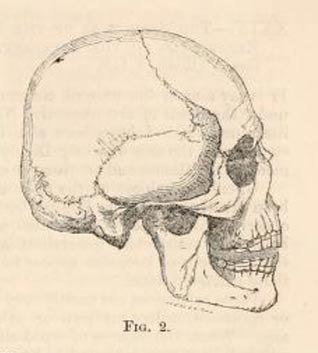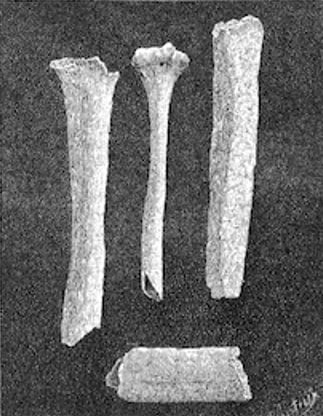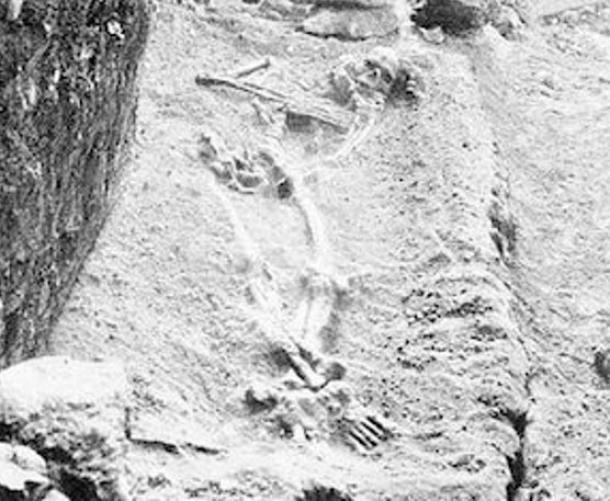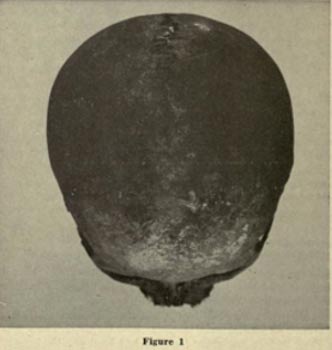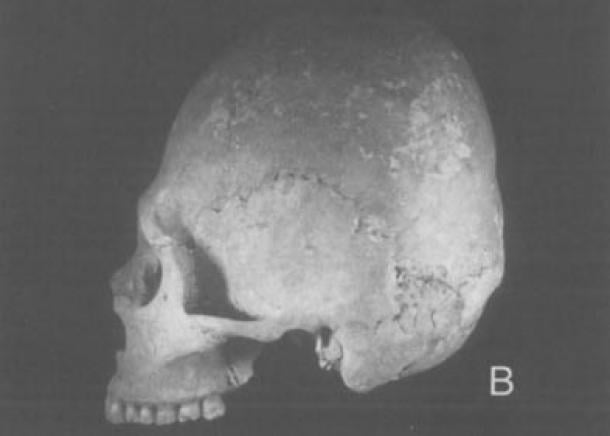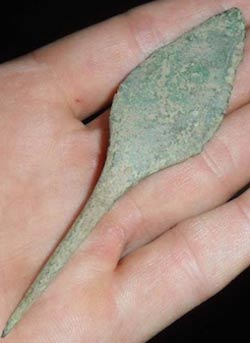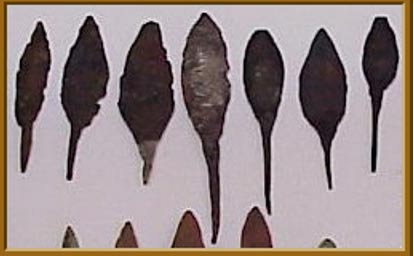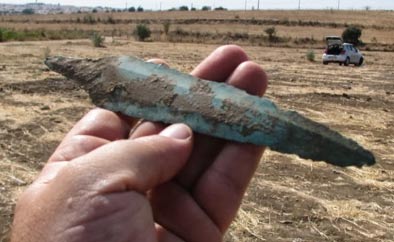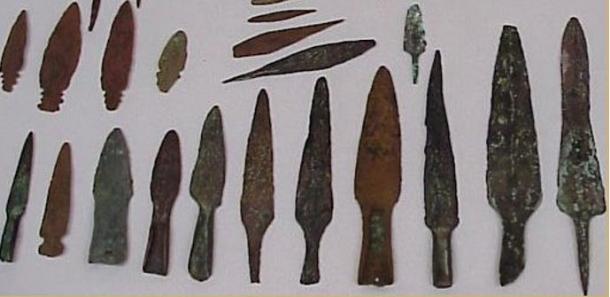The Adena People and Prehistoric Colonization of North America
European scholars have noted evidence of ancient colonization of North America. After studying American Mounds and Earthworks, Dr C.A. Adolph Zestermann (Leipzig) wrote in 1851:
“I can find no other explanation other than a gradual migration of a portion of the human family from one part of the world to another-from one hemisphere to the other. In short, I see in it a colonization of America, by means of an immigration from Europe.”16
Unique cranial features of Adena people shared with European Beaker people
William S Webb and Charles Snow devoted considerable space to analysis of the large, high-vaulted crania of the Adena people of North America:
“Approximately 89% (31 of 35) of the adult males, 92 % (22 of 24) of the adult females are brachycephalic.”1
“The forehead is typically a prominent one, bordered below by fairly sizeable brow ridges. The root of the nose is of average proportions and continues on to a prominent convex bridge that is one of the prominent features of the face. The characteristic bulge of the upper and lower jaws (alveolar prognathism) is moderate in projection…Usually the cheek bones are not only of large size in themselves but they have a forward and lateral prominence…”2
Snow felt that these traits, along with the “great width of the bony chin” distinguished Adena from their predecessors and contemporaries.2
The Adena practiced artificial deformation of the occipital region, enhancing their large congenital features. Webb and Snow noted that Adena skulls were “the highest known in the world”2 with an average index of 89.5, while the deformed skulls reached as high as 100a2.
The characteristics of the Beaker People are virtually identical to Adena. Carlton Stephen Coons:
“Where Bell Beaker burials are found in central Europe, the skeletons are almost always of the same tall brachycephalic type…”
“…the browridges are often heavy, the general ruggedness frequently greater. The faces are characteristically narrow, the orbits medium to high, the nasal skeleton high and aquiline; the occiput frequently flat.”
“They form one of the rare groups in the world with a cranial length of 184mm and an index of over 80.”3
William Boyd Dawkins described the beakers’ brachycephalic crania as having “strongly marked” ridges, “high and broad” cheek bones, and jaws “presenting prognathism”,4 while Burkett described “large teeth” in the “powerful” lower jaw.5
The Beaker People practiced the same type of occipital cranial deformation as Adena:
“…there is also generally an occipital flattening which may have been caused by the use of an unyielding cradle board...”4
“One usual normal form of these crania is brachycephalic, and that decidedly so…and it is too obvious to need remark, that the mode of nursing would heighten this brachycephalism.”6
Giant skeletons
Besides these similarities, Neolithic and Bronze Age burials in Europe have yielded very large skeletons similar to those often found in Adena Mounds.
A truly gigantic specimen has been documented from Castelnau-le-Lez, Southern France. In 1890, while excavating the Neolithic strata of a burial mound, Georges de Lapouge discovered the humerus, tibia, and femoral shaft of an individual he estimated to be between 11 and 12 feet tall. Lapauge’s conclusions were officially published in La Nature, Vol 18 (888) along with an image of the bones with a normal size humerous.7
“I think it unnecessary to note that these bones are undeniably human, despite their enormous size…The subject would have been a likely size of 3m, 50.”
Significantly, these remains were studied by several of Lapouge’s contemporaries, who agreed that these were indeed the bones of a giant human, as reported in The August, 1890 issue of Popular Science.8
In 1918, at Surrey, England, the “giant” skeleton of a man of “unusual stature” was found in a “perfect state of preservation”.9 At the Woodyates barrow group in Wiltshire, Richard Colt Hoare unearthed a “large skeleton” and another of a “tall and stout man”.10 In 1833, a “skeleton laid at full length within a rude cist”, was discovered at Port Seaton, Scotland.
Measurements “indicated the remains of a man nearly seven feet high.”11
The discovery of gigantic skeletons in several caves around the U.S. has been a popular subject in recent years. Less known are the documented finds on record from the dark zone in Europe.
In the late 1800s, a series of unusual remains were found at the Mentone Caves on the coast of Italy. The skeletons were the subject of an article in the November, 1895 issue of popular Science. According to the article, in 1884 a male skeleton “of gigantic size, being six feet and nine and a half inches in height…” was found. In 1892 three more skeletons were found, two of which measured “6 feet 6 inches and a half”, while the third was “ six feet ten inches and a half” estimated to stand “about seven feet four inches” while living. The crania are described as being “of unusual size and thickness”, with “unusually large” orbital cavities, and “large teeth”, the “front nearly as large as molars”. Skeletons were interred on their sides in “a cist or rude dolmen”, and were covered in red ocher. Artifacts include flint blades, shells, and deer teeth.12 Neolithic Axes have also been found.13
A similar cave burial was found at Glamorganshire (Wales) in 1824. According to W.B. Dawkins,13 a body of “gigantic stature” was found with shell and ivory artifacts, a bone awl and covered in Red Ocher.
Dating the Beaker and Adena cultures
One of the criteria commonly used in dismissing theoretical connections between the Beaker and Adena cultures is the discrepancy of dating. The initial spread of Beaker People around Western Europe occurred by around 2400 B.C., while generic sources meant for public consumption (such as textbooks, websites, and interpretive pamphlets) place the Adena Culture at around 500 B.C. However, this chronological discrepancy gradually vanishes with a review of the complete historical and archaeological data. To begin with, we will trace the cultural legacy of the Zoned Beaker cultural package down to the Iron Age.
The Unetice Culture is divided into “Older” and “Younger” phases. The earlier phase lasts from about 2200 B.C. to 2000 B.C., while the “younger” phase commences and lasts until 1800-1700 B.C., when descendents formulate the Tumulus and Trzciniec Cultures.
The Tumulus Culture phase lasts from roughly 1700-1200 B.C. before being succeeded in the Early Iron Age by the Urnfield (1300B.C.), Hallstatt, (800-500B.C.), and La Tene Cultures, identified as the “Keltoi” of ancient history.
Historically, the cultural “genealogy” of the Beaker legacy (including tumulus and earthwork construction) continues in one form or another for over 2,000 years after the initial appearance in the Chalcolithic/EBA. At the same time, a review of radiocarbon dates pushes Adena further into the past.
A Radiocarbon date of 1200-1100 B.C. was attained from the lower level of the Toepfner Mound in Ohio.14 Also from Ohio, The Kline (822 B.C.), Arthur James (803+/-115 B.C.), Munson Springs (833 and 764 B.C.), and William H Davis (1405+/-60 BC)15 mounds have all yielded very early dates. A date of 1635 B.C. was attained from the lower level of the Cresap Mound in West Virginia, which Don Dragoo determined to be too early for Adena.14 The Dover Mound in Kentucky produced a date of around 780 B.C from an upper tomb in the structure.16
Two Red Ocher tumuli at the Morton Mound group in Illinois have been dated to 1200 B.C.17 Artifacts of the Red Ocher Culture are noted as mixed with those of Adena at several mounds at the Turkey River Ring in Iowa,18 a circular ditched enclosure. Two mounds inside of the enclosure yielded dates of 600(mound 38) and 800 B.C. (Mound 39).19
In addition to obvious cultural and artifact similarities, Red Ocher is considered to be ancestral to Adena due to the brachycephalic crania found in Red Ocher graves.14
Many flat grave cemeteries from the Late Archaic period include Adena or Adena-like remains. At the Indian River sites in New York State, cache blades, gorgets, copper implements, and red ocher were found in contexts dating to 2448 +/-260 B.C.20
This site was believed by Ritchie,20 Webb,2 and Dragoo14 to represent the “prototype” of the Cult of the Dead of the Glacial Kame, Red Ocher, Adena, and Hopewell cultures. At the Berryhill site in Ohio (1300 B.C.), brachycephalic crania featuring occipital deformation were determined to belong to a group “ancestral” to Adena.21 Graves also featured red ocher.
With regards to these flat grave complexes, we feel it to be significant that according to Mike Parker Pearson,22 in the Beaker Culture “the dead were buried either under round mounds or in flat burials with no earthen monument to mark them. It seems that the earlier burials, around 2400 B.C., were placed in flat graves…”(author’s emphasis).
In West Virginia, Early Adena Fayette-Thick and Half-Moon Pottery has been found in contexts dating to 1375 and 1290 B.C.,23 and in Ohio to 1500 B.C..24 Adena Pottery is derived from the Vinette 1 pottery, which some have actually ascribed to a Western European origin.25
Thus, just as the legacy of the Zoned Beaker cultural package reaches across the span of 2000B.C. to the dawn of the first millennia A.D., Adena-type mounds and earthworks, artifact types, and cultural traits extend back into the second and possibly even the third millennium B.C. Here the source was in all likelihood associated with the Old Copper Complex. Old Copper Artifacts are strikingly similar to Bell Beaker types.
Today, diffusionism is still considered “cult” archaeology. Yet the possibility persists that an ancient culture did indeed cross the Atlantic millennia ago.

